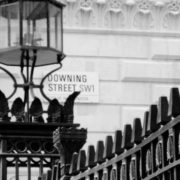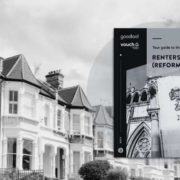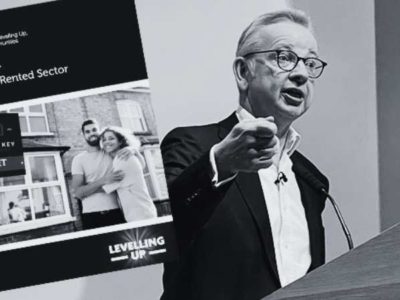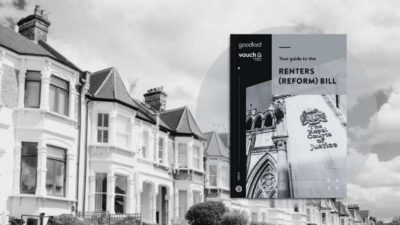UK house prices increased by 10.9% in the year to February 2022, up from 10.2% in January 2022. On a non-seasonally adjusted basis, average house prices in the UK increased by 0.5% between January and February 2022, up from a decrease of 0.04% during the same period a year earlier (January and February 2021).
The UK Property Transactions Statistics showed that in February 2022, on a seasonally adjusted basis, the estimated number of transactions of residential properties with a value of £40,000 or greater was 112,240.
This is 20.8% lower than a year ago (February 2021). Between January and February 2022, UK transactions increased by 4.4% on a seasonally adjusted basis.
House price growth was strongest in Wales where prices increased by 14.2% in the year to February 2022.
The lowest annual growth was in London, where prices increased by 8.1% in the year to February 2022.
England
In England the February data shows, on average, house prices have risen by 0.9% since January 2022.
The annual price rise of 10.7% takes the average property value to £295,888.
The regional data for England indicates that:
- the East of England experienced the greatest increase in its average property value over the last 12 months with a movement of 12.5%
- the East Midlands saw the most significant monthly price fall with a movement of -0.4%
- London experienced the greatest monthly growth with an increase of 2.2%
- London saw the lowest annual price growth with an increase of 8.1%
Price change by region for England
| Region | Average price February 2022 | Annual change % since February 2021 | Monthly change % since January 2022 |
|---|---|---|---|
| East Midlands | £235,993 | 10.9 | -0.4 |
| East of England | £345,652 | 12.5 | 1.3 |
| London | £529,882 | 8.1 | 2.2 |
| North East | £152,551 | 9.4 | 1.2 |
| North West | £203,538 | 10.2 | 1.6 |
| South East | £380,528 | 12 | -0.3 |
| South West | £312,697 | 12.5 | 1.2 |
| West Midlands | £237,757 | 10 | 0.3 |
| Yorkshire and the Humber | £198,599 | 9.5 | 1.2 |
Repossession sales by volume for England
The lowest number of repossession sales in December 2021 was in the East of England.
The highest number of repossession sales in December 2021 was in the North West.
| Repossession sales | December 2021 |
|---|---|
| East Midlands | 5 |
| East of England | 0 |
| London | 5 |
| North East | 7 |
| North West | 15 |
| South East | 7 |
| South West | 1 |
| West Midlands | 5 |
| Yorkshire and the Humber | 6 |
| England | 51 |
Average price by property type for England
| Property type | February 2022 | February 2021 | Difference |
|---|---|---|---|
| Detached | £469,095 | £409,913 | 14.4 |
| Semi-detached | £281,313 | £252,729 | 11.3 |
| Terraced | £238,145 | £219,068 | 8.7 |
| Flat/maisonette | £250,047 | £231,972 | 7.8 |
| All | £295,888 | £267,192 | 10.7 |
Funding and buyer status for England
| Transaction type | Average price February 2022 | Annual price change % since February 2021 | Monthly price change % since January 2022 |
|---|---|---|---|
| Cash | £277,617 | 10.5 | 1 |
| Mortgage | £305,032 | 10.8 | 0.9 |
| First-time buyer | £245,411 | 9.9 | 0.9 |
| Former owner occupier | £339,628 | 11.6 | 0.9 |
Building status for England
| Building status* | Average price February 2022 | Annual price change % since February 2021 | Monthly price change % since January 2022 |
|---|---|---|---|
| New build | £377,190 | 19.6 | -0.6 |
| Existing resold property | £284,762 | 8.5 | 1.2 |
London
London shows, on average, house prices have risen by 2.2% since January 2022.
An annual price rise of 8.1% takes the average property value to £529,882.
| Property type | February 2022 | February 2021 | Difference % |
|---|---|---|---|
| Detached | £1,074,093 | £956,499 | 12.3 |
| Semi-detached | £678,079 | £615,085 | 10.2 |
| Terraced | £564,869 | £528,384 | 6.9 |
| Flat/maisonette | £450,576 | £417,610 | 7.9 |
| All | £529,882 | £490,384 | 8.1 |
Funding and buyer status for London
| Transaction type | Average price February 2022 | Annual price change % since February 2021 | Monthly price change % since January 2022 |
|---|---|---|---|
| Cash | £533,011 | 9.2 | 3.1 |
| Mortgage | £522,773 | 7.8 | 2 |
| First-time buyer | £458,863 | 7.5 | 2.6 |
| Former owner occupier | £606,934 | 8.9 | 1.8 |
Building status for London
| Building status* | Average price February 2022 | Annual price change % since February 2021 | Monthly price change % since January 2022 |
|---|---|---|---|
| New build | £538,154 | 10.7 | -1.3 |
| Existing resold property | £518,045 | 4.1 | 0.9 |
Wales
Wales shows, on average, house prices have fallen by 0.7% since January 2022.
An annual price rise of 14.2% takes the average property value to £205,114.
There was 1 repossession sale for Wales in December 2021.
Average price by property type for Wales
| Property type | February 2022 | February 2021 | Difference % |
|---|---|---|---|
| Detached | £318,093 | £272,068 | 16.9 |
| Semi-detached | £197,867 | £173,324 | 14.2 |
| Terraced | £158,271 | £140,338 | 12.8 |
| Flat/maisonette | £133,301 | £120,351 | 10.8 |
| All | £205,114 | £179,554 | 14.2 |
Funding and buyer status for Wales
| Transaction type | Average price February 2022 | Annual price change % since February 2021 | Monthly price change % since January 2022 |
|---|---|---|---|
| Cash | £198,684 | 14.1 | -1.1 |
| Mortgage | £208,889 | 14.3 | -0.5 |
| First-time buyer | £175,952 | 13.5 | -0.7 |
| Former owner occupier | £239,543 | 15 | -0.6 |
Building status for Wales
| Building status* | Average price January 2022 | Annual price change % since January 2021 | Monthly price change % since November 2021 |
|---|---|---|---|
| New build | £283,667 | 23.7 | -0.1 |
| Existing resold property | £199,044 | 11.5 | 2.2 |
Managing Director of Barrows and Forrester, James Forrester, commented:
“To say we’ve seen a fast start to the year would be somewhat of an understatement where current property market performance is concerned.
Despite the wider narrative of financial turmoil that is impacting many households, we’ve seen an unrelenting level of homebuyers continue to enter the market in search of what is likely to be the most expensive purchase they will make in their lifetime.
As a result, we’re seeing homes go under offer at an extremely quick pace, within days of listing them online in many cases, as buyers tussle over what limited stock there is available.”
Managing Director of HBB Solutions, Chris Hodgkinson, commented:
“An incredibly competitive market is great for those looking to sell, but for homebuyers entering the fray it can be a stressful and expensive endeavour.
Not only are they already facing a far higher cost when it comes to climbing the ladder, but pickings are slim in terms of the stock available.
This not only makes it harder to find their ideal home, but when they do, many are being beaten to the punch, outbid during the offers stage and even gazumped when they think they have finally secured a property.”
Director of Benham and Reeves, Marc von Grundherr, commented:
“While the London market continues to trail the house price pack where annual rates of appreciation are concerned, February’s explosive monthly increase provides the first signs of how quickly the tide is starting to turn.
We’ve seen a sharp uptick in market activity on the ground for some months, driven by the return of both domestic professionals and foreign buyers, and this is now starting to translate into positive market momentum.
Although the wider UK market may be susceptible to higher mortgage rates and the increasing cost of living, this is less likely to faze buyers within the capital.
So we expect to see a complete role reversal with regard to property value performance as the year goes on.”
Director of Henry Dannell, Geoff Garrett, commented:
“The market has continued to excel despite what is a very delicate economic landscape and while the cost of borrowing has remained fairly favourable, those currently looking to buy should tread very cautiously with regard to over borrowing.
It remains to be seen as to whether the cost of a mortgage will climb substantially this year, but with the wider cost of living also putting a squeeze on household finances, those borrowing well beyond their means may fall into financial difficulty further down the line.”
Christina Melling, CEO of Stipendium, commented:
“The current property market boom is being widely touted as a key indicator of economic success against an otherwise gloomy pandemic backdrop.
But while those lucky enough to already own a home may agree, it’s unlikely this sentiment is shared by those struggling to get a foot on the ladder.
The average first-time buyer is now over £21,000 worse off than just a year ago having seen the value of a first home increase by 10.1%.
While the cost of borrowing may remain favourable, the initial financial hurdle of a mortgage deposit is simply too much for many to overcome.
With the cost of living also climbing, those previously struggling to save will no doubt find the task almost impossible going forward.”
Lee Martin, Head of UK for new-build specialists, Unlatch, says:
“Demand for new homes has only grown stronger in 2022 and the sector is certainly playing a pivotal role where market performance is concerned.
This is evident by the fact that new-build house prices are climbing at more than double the rate of the existing market and so it’s fair to say the sector is the engine room driving current rates of house price appreciation.
But despite this strong performance, it’s also fair to say that the sector is helping beleaguered first-time buyers by enabling them to reduce the sizeable financial barrier of a mortgage deposit by utilising the Help to Buy scheme.
So while the Government has largely failed in its ambitions to build more homes, the nation’s housebuilders have taken up the mantle to keep Britain building, delivering housing stock that is sorely needed at all levels of the market.”
Ross Counsell chartered surveyor and director at Good Move, on today’s ONS HPI, and the property trends we should expect to see in 2022:
“According to the latest ONS HPI statistics, annual house prices increased by 10.9% over the year of February 2022, up 10.2% from the previous month.
This means that average house prices now stand at a whopping £277,000 which is a significant rise of £277,000 from this time last year.
In terms, of area prices, the Southwest and East of England showed the highest annual growth of 12.5% in the year in February 2022.
With priorities changing over the past year, many buyers looked to purchase larger properties in suburbs such as the home counties, as opposed to inner-city areas which offer less space for a higher price margin.
Despite London showing the lowest annual growth at 8.1% – we should expect demand to rise over the next couple of months.
Commuting is now becoming less attractive than it was to workers, so we expect to see an increased interest in properties in the capital – especially flats.
Therefore, if you are looking to buy in London, we’d suggest now would be the best time before demand surges prices.
Although the rising house prices might sound alarming to many prospective buyers, it is important to note that many megatrends such as the ongoing effects of the coronavirus pandemic, the devastating situation in Ukraine and government schemes shape the fluctuation of house prices. What comes up, must once again come down.
The property landscape is extremely difficult now, as the cost of living and household bills continue to rise – for many adults they are having to make cuts in other respects.
Alike the lockdown trend where we saw people returning to the nest, we can expect young renters to return to the family home to save a bit of cash for themselves and the future.
This will no doubt slow demand on the property market, and with less financial wiggling room sellers cannot charge the inflated rates they did before the cost-of-living crisis.
It’s important to note that there’s no certain way to predict the megatrends which will shape the property market over the coming months.
For any prospective property buyers, I would give a simple piece of advice – be patient.
Hangfire, figure out exactly what you want in a property, and have a mortgage principle set up in preparation.”
Alex Lyle, director of Richmond estate agency Antony Roberts, commented:
“Although it may not be seeing the fastest levels of growth compared with other parts of the country, London continues its upwards trend in prices, with detached family homes doing particularly well.
We continue to see large numbers of viewings, multiple offers and sealed bid scenarios, with buyers on our patch anxious not so much about rising house prices or interest rates but limited choice.
The housing market has been stubbornly short on supply but more stock is becoming available, particularly in the mid- to upper-family house market, as those properties look their best at this time of year.
Sellers are also bringing forward plans in the hope of benefiting from what could turn out to be a real window of opportunity.”
Mark Harris, managing director of mortgage broker SPF Private Clients, commented:
“The ready availability of cheap finance is one of the contributing factors to higher house prices.
Lenders remain keen to lend, with borrowers opting for longer-term fixes in order to counter the considerable uncertainty in the world.
While changes are being consulted on to relax some affordability criteria and allow certain buyers to borrow more, a return to irresponsible lending is unlikely given there would still be barriers in place.”
Jeremy Leaf, north London estate agent and a former RICS residential chairman, said:
“These numbers show house prices continuing on their apparently inexorable upward path but that’s not quite what’s happening on the ground now.
Demand is still well ahead of supply but concerns about the rising cost of living, squeezed pay packets and potentially further interest rate rises, are reducing price growth and transaction numbers.
Looking forward, we expect activity to return to more ‘normal’ pre-pandemic conditions as supply picks up as part of the usual spring bounce.”
Gareth Lewis, commercial director of property lender MT Finance, said:
“The gap between supply and demand continues to push property prices to new highs.
As the cost of living also continues to rise, buyers are having to find more money to purchase their dream home, while at the same time paying more for everything else.
Those trying to move up the ladder are finding it harder still as the trading gap grows wider and the home they are moving to becomes relatively more expensive.
First-time buyers are finding it even more difficult, with even more money required for a deposit.
Some reform to stamp duty, perhaps removing the need for downsizers to pay it, needs to be considered to stimulate the market and increase supply, which will help keep prices in check.”





















Comments